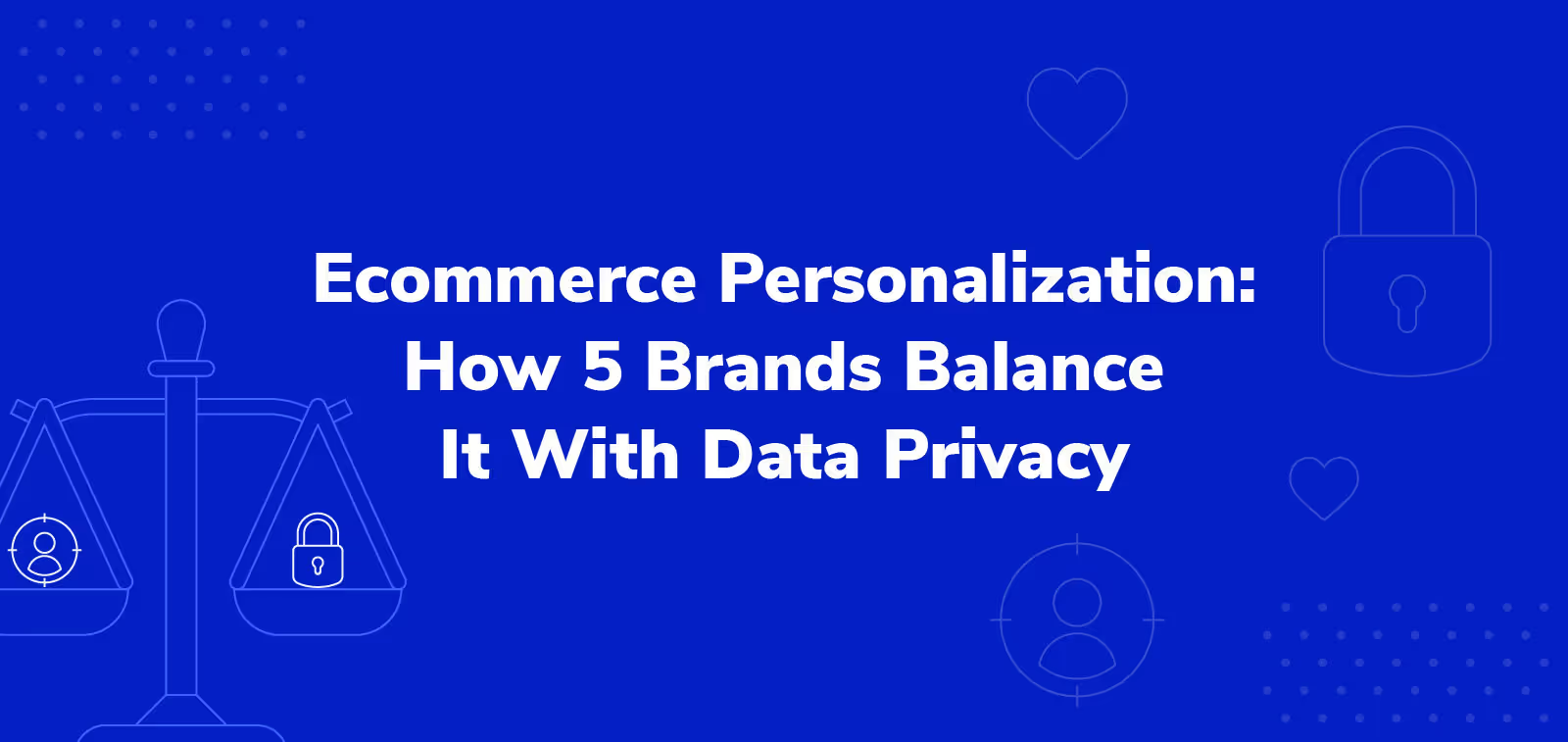7 Innovative Ways to Build Trust in Ecommerce in 2022

Trust is changing.
In a survey of 25,000 consumers across 22 countries, 50% agreed or strongly agreed with the statement, “The pandemic made me totally revise my personal purpose and what is important for me in life.” Only 17% disagreed.
Accenture calls this group “reimagined” consumers. While price and quality still matter to them, they also look to other key differentiators. One such differentiator is trust, which is now more important to reimagined consumers than price and quality when it comes to sticking with a brand or switching.
But trust in what?
Depending on the priorities of the customer, that could mean expecting brands to keep shopper data private, provide hassle-free returns, behave ethically, or honor reasonable claims made against a comprehensive product protection plan.
Trust has long been important to consumers, but it’s especially important in 2022. Follow these tactics to build your audience’s faith in your brand and e-commerce in the year ahead.
1. Emphasize your generous return policy (or build one)

UPS reports that 66% of online shoppers review a return policy before they buy. Plus, a weak or nonexistent return policy leads to poor customer experiences. If that happens, you may start seeing negative feedback that damages consumer trust in your brand.
To combat this, encourage purchases by offering a solid return policy and making it impossible to miss. If you still don’t have a return policy or think you might be missing some details, double-check you’ve got all the key information.
All adequate return policies explain:
- Which items can be returned
- Which items can be exchanged and for what (e.g., item of equal value)
- Which are non-returnable or non-exchangeable
- Exceptions that may apply (e.g., final sale items)
- Any time limits (30 days, 60 days, 90 days, etc.)
- The condition in which different items can be returned (how worn, damaged, etc.)
- How to return or exchange an item
If you have all of the above in place, you’ve got a great starting point. To stand out, go even further by making your return policy accessible and easy to understand.
- Don’t write your return policy in legalese. While a formal and hard-to-read set of policies might satisfy the small number of customers comfortable reading such documents, it confuses and alienates others.
- Use clear and simple language in a large enough font.
- Structure it so anyone can find an answer to their specific questions.
- Where possible, use images. For example, display two pictures of sweaters side by side, with one showing the condition in which a sweater would be accepted back and one in which it wouldn’t.
- Don’t hide the link to your return policy in the footer of your site. Have it displayed as prominently as any other section of your website, and make sure it’s clearly visible on product and checkout pages.
By emphasizing your generous return policy, building trust in e-commerce can become significantly easier.
2. Be open about your operations and values
You work diligently to please your customers, but sometimes mistakes still happen. You might send the wrong color sweatband to your tennis-fanatic customer, or maybe your backpack product got damaged in the mail. Customers expect the occasional faux pas, so don’t sweat it! Use these issues as an opportunity to wow the customer.
It’s important that when a mistake happens, you do everything you can to fix the problem and win back the customer. Part of that is establishing a reputation for transparency.
According to data from Sprout Social, almost 90% of people are more likely to give a brand a second chance after a bad customer experience if they have a history of being transparent.
That’s a real, concrete advantage of trust.
Build trust in e-commerce by achieving transparency

One powerful way to boost your transparency is to share your supply chain details with consumers, like where your raw materials come from.
Allbirds has done this with the merino wool that goes into so many of their products. On their website, you’ll find details of the sheep their wool comes from and how they work with organizations like ZQ Merino to maintain high standards of farming, land management, and animal welfare.
A second but complementary approach to establishing real transparency is to provide a cost breakdown of your products. Where does each dollar the customer spends on your product go?
Everlane embraces what they call radical transparency, in part by showing where every dollar and cent go in unsparing detail. This lets customers see that Everlane is standing by its values. For example, someone interested in only buying clothes made by workers paid fair wages can check the labor cost for a specific product.
Consumers want to shop with brands that reflect their values, and that means being open about your social values is a major opportunity.
Though the figure varies from year to year, the 2021 5WPR Consumer Culture Report found that 51% of customers want the brands they buy from to share their values.
Don’t worry about this seeming divisive. According to research by Stackla, 90% of customers want authenticity from brands, so be open about the causes you genuinely support. Patagonia continues to support a range of environmental and social justice causes while remaining one of the dominant outdoor outfitters in the United States.
Emphasize how your business practices, donations, and partnerships are all consistent with your brand values.
3. Introduce ‘try before you buy’

Customers are people, and people like to avoid risks when they can. Handing over money to an online business you’ve never shopped with can feel like a risk.
Prove to customers you can be trusted by only charging for the product after the customer has received it and confirmed they’re satisfied. This approach is spreading in the fashion e-commerce vertical.
For example, Stitch Fix sends a curated selection of clothes to customers each month. The customer can try them on and send back the items they don’t want in a pre-paid package included in their shipment. Stitch Fix only charges the customer for items they choose to keep or if the customer is non-responsive. If the customer sends back any items, they are deducted from the total cost.
This approach has worked well for Stitch Fix, which announced 29% year-over-year growth for the 2021 full fiscal year.
To implement this system effectively:
- Provide customers pre-paid shipping materials (such as bags, protective envelopes, or containers) appropriate for returning the product. For example, a T-shirt might only require a decent-sized envelope, while electronic items might need a waterproof bag and a protective box with padding.
- Make sure your customers know when you’ll charge them if you don’t hear back — as in all sales, setting expectations can prevent frustration, anger, and disappointment. An unexpected charge on a credit card can cause all of that. Let your customer know when they’ll be charged on the confirmation page and in their confirmation email.
Of course, the “try before you buy” approach means keeping careful track of your billing schedule, accounts payable, and liabilities. AI-enhanced accounting tools like Stampli keep managing this information simple.
4. Impress customers with strong privacy protection

The most recent State of Consumer Trust report from Morning Consult found reliability to be the single biggest contributor to building consumer trust.
The report found that the most significant factor in shaping perceptions of reliability is whether consumers believe the brand will protect their personal data: 73% of respondents said it was “very important” when deciding whether to trust a company.
There are few types of data more sensitive than credit card information, which is why making sure you’re keeping to the right payment card industry (PCI) compliance level is crucial.
As a quick reminder, the Payment Card Industry Data Security Standard (PCI DSS) applies to all companies that take, process, hold, or transmit credit card information. It encompasses a range of security standards for safeguarding information. If you’d like to familiarize yourself with the latest standards, you can find them on the official PCI Security Standards Council website.
Losing customers’ financial information is a recipe for damaging your brand reputation. Prioritize data security to maintain your customers’ trust.
How to stay PCI compliant
First, confirm your business’ PCI compliance level. Each of the levels has escalating requirements (from 4 at the lowest level up to 1) that scale with the number of credit card transactions you process. Generally, the bigger your business, the stricter the requirements.
Here’s a quick guide to the different levels — but keep in mind, this information is just an initial guide. To stay compliant, check the latest information directly on the PCI Security Standards Council website.
- Level 4 – Applies to merchants processing less than 20,000 e-commerce transactions per year. It also applies to merchants — regardless of channel, such as over the phone — that process up to 1 million credit card transactions per year.
- Level 3 – For merchants who process between 20,000 and 1 million e-commerce transactions annually.
- Level 2 – For any merchants processing between 1 million and 6 million card transactions each year, whether in e-commerce or not.
- Level 1 – For merchants processing greater than 6 million transactions per year, or any merchant that the organization providing the infrastructure (for example Visa or Mastercard) thinks should be subject to level 1 requirements to protect their system.
Remember, falling foul of a data breach can bump your compliance requirements higher. This can happen if you’ve had a breach that led to an account data compromise.
Once you’ve confirmed your compliance level, ensure that you’re meeting all the necessary standards. For those in level 3 and higher, your organization should have a designated professional responsible for ensuring compliance.
Your business might fall into level 4. If so, you will need to follow the following steps to satisfy the requirements. Again, confirm the standards that apply to your business at the PCI Security Standards Council website.
- Find out which self-assessment questionnaire (SAQ) you need to use. To help with this, you can use this chart.
- Complete the SAQ according to the instructions. You can find this in the PCI document library.
- Depending upon the results of the SAQ, you may need to pass a vulnerability scan with a PCI SSC Approved Scanning Vendor (ASV).
- Complete the attestation of compliance in the SAQ tool.
- Submit the SAQ along with the attestation and any supporting evidence.
There’s real evidence that consumers want businesses to go through these steps. Karsten Lund, CEO of Optimeria, used VWO to optimize checkout pages on the SlideShop website. The biggest concerns customers had about the checkout process? Data protection. Two of the top three objections site visitors raised were, “Why are you asking for my email address?” and “OK, I will do the payment, but what if my credit card info is stolen?”
The A/B testing process led Karsten to take targeted trust-building steps, including specifying the types of credit cards accepted, adding the Verisign trust seal, and other indicators that transactions were secure, such as PCI compliance and “Verified by Visa.” The result was a 15.05% boost in purchases. That’s advantageous to building trust in e-commerce for any business.
5. Offer personalized support with conversational AI

Since the pandemic began, average weekly support requests are up 20%, according to original Zendesk research. But that same report also found that customers increasingly expect a strong customer experience rooted in their specific needs.
Caught between a major post-pandemic uptick in the volume of support requests and heightened expectations for the quality of the support delivered, e-commerce leaders must find a way to address both in 2022. That means providing a speedy and personal service through conversational AI. This is part of what’s known as conversational commerce.
With a conversational commerce tool like Answer Bot or LivePerson, the customer can receive real-time advice that’s specific to their exact needs. By reliably addressing the individual needs of customers, they will come to trust you more over time.
That means, just like an in-store sales assistant, your customers can be welcomed and asked what they’re looking for and if they have any specific needs. For example, if a customer tells the chatbot they’re looking for a nice perfume to give as a gift, but they don’t know where to start, the AI-powered bot can ask additional automated questions and offer suggestions based on how the customer answers.
Of course, the customer should be able to switch to a human support agent if they need to. An intelligent combination of conversational AI and human support addresses the personalized aspect of customer experience.
By delegating simple issues to conversational AI technology, support teams can handle a massive number of requests without overwhelming agents.
6. Go beyond pictures (and even video)

With augmented reality, e-commerce businesses are now able to give online customers a much better sense of what their products are like in person.
Made famous by Pokémon Go, augmented reality (AR) superimposes a digital model of an object onto an image of the real world (your screen while it’s using your phone’s camera, for example). This is distinct from virtual reality (VR), which involves the creation of an immersive digital environment a user can enter, usually with the use of a headset. AR requires no such specialized equipment for the consumer to use.
In the furniture e-commerce vertical, IKEA has successfully used AR since 2017. Well suited to a post-COVID environment, IKEA Place allows shoppers to see how products look in their homes.
Tools like Nextech AR mean businesses don’t have to go to the trouble of developing their own AR technologies. As a result, AR with full 3D models of products is considerably more accessible than ever before.
This technology can also help brands win over the customer. They can visualize the product as though they were looking at it in person, so they feel more confident in purchasing it than if they had just looked at a photo or video.
7. Offer real product protection to build trust in e-commerce

Another factor that customers weigh when determining whether or not to trust a business is their refund policy. According to Morning Consult, 68% of consumers say it’s “very important” that the company “provide refunds if products don’t work.” This desire for fair compensation applies even if a product was delivered in working order.
The takeaway? Customers want to make sure they’ll receive a refund or replacement if their product stops working. In addition to a manufacturer warranty and strong return policy, a comprehensive product protection plan reassures customers that a merchant stands behind their products.
Protection plans from legacy providers tend to be more limited, only covering item types that fit particular categories those providers want to cover. As a result, the types of products that could be covered often reflect the priorities of legacy providers rather than merchants and their customers.
For example, service contract providers would provide coverage for trucks but not truck covers, which are an important tool for many truck owners. This meant sellers of truck covers couldn’t show their customers how much confidence they had in their product.
On the other hand, Extend works with clients to offer tailored protection plans for specific products.
Extend offers e-commerce managers and strategists a simple way to offer protection plans that, like the trust badges discussed earlier, consumers see at a variety of stores. With Extend plans increasingly widespread, customers can see that a store offering Extend plans provides real product protection.
Time to level up
Now that you have these seven ways to build trust with your customers, it’s time to get started. By using the points above to win consumer confidence, you can increase sales and turn 2022 into a phenomenal year for your e-commerce venture.
To get started building trust in e-commerce with your customers right now, book an Extend demo today.
Anastasia Fullerton is Head of B2B Marketing at Extend. Anastasia is passionate about strong stories, great relationships, and sour candy (if you live in SF check out her favorite spot, Giddy Candy, on Noe St). Since she got her degree in engineering from Stanford, she’s been making complex concepts (like underwriting) approachable. At Extend, she helps merchants figure out how to build better long-term relationships with their customers.
.svg)













































.avif)










